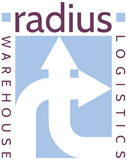When it comes to international shipping and bypassing customs, providing the clearest and most accurate information can help to speed up the process. Certain products fall under the overriding category, Hazardous, meaning they pose a specific threat to those handling them. This could be for a number of reasons, including flammability, corrosiveness or poisonous features. In this post, we explain the 8 different classifications that help shippers to determine whether their product is deemed hazardous.
Class 1 – Explosive Materials
Products that fall into this category are made up of molecules that rapidly change their state into a hot gas. This produces a ‘sudden and violent physical effect‘, otherwise known as an explosion. Products that generally fall into this classification and are shipped internationally include fireworks, airbag inflators or ammunition.
Class 2 – Gases
If your product sits within the Gases classification, it will likely need to be transported under pressure in order to reduce the overall volume. Here, it is the pressure that presents the hazard if it is released suddenly. Products that sit under this categorisation include aerosols, lighters and natural gases used for BBQ ignition.
Class 3 – Flammable Liquids
As the name suggests, products that fall under this classification include ones that could potentially set alight if exposed to naked flames. They need to have an ignition temperature of no more than 60°C. These include acetone, paints, perfume and gasoline.
Class 4 – Flammable Solids
Similar to Class 3, these products are solid but capable of spontaneously combusting or becoming dangerous when wet. Items that fall under this category include matches, sulphur and some metal powders.
Class 5 – Oxidising Substances
Oxidising products are ones that have a high oxygen content and are highly reactive – either being flammable or combustible. The oxygen levels mean that fires are difficult to extinguish with anything other than a large amount of cold water. Products here include hydrogen peroxide, sodium nitrite and ammonium nitrate fertilizers.
Class 6 – Toxic and Infectious Substances
Items in Class 6 are chemical poisons. They can cause significant damage if allowed to come into contact with skin, breathed in or swallowed. These include some pesticides, clinical wastes and cyanides.
Class 7 – Radioactive Materials
Products here contain unstable atoms. These change their structure randomly during a period of time and can damage the human body because of radiation. Here, you’ll find products like uranium, radioactive ores and some medical equipment.
Class 8 – Corrosive Materials
The products in Class 7 cause severe damage to the skin and have high corrosive levels. They include items such as sulfuric acid, batteries and sodium hydroxide.
Here at Radius Warehouse and Logistic Services, we can help identify which classification your product falls into. If you would like any additional information, get in contact today.



